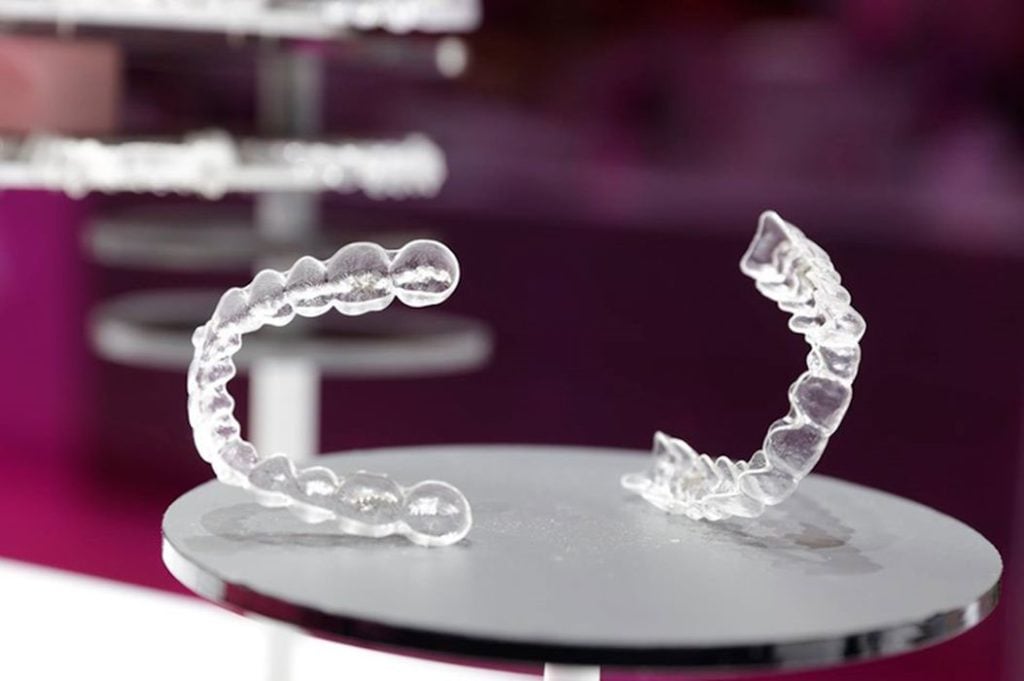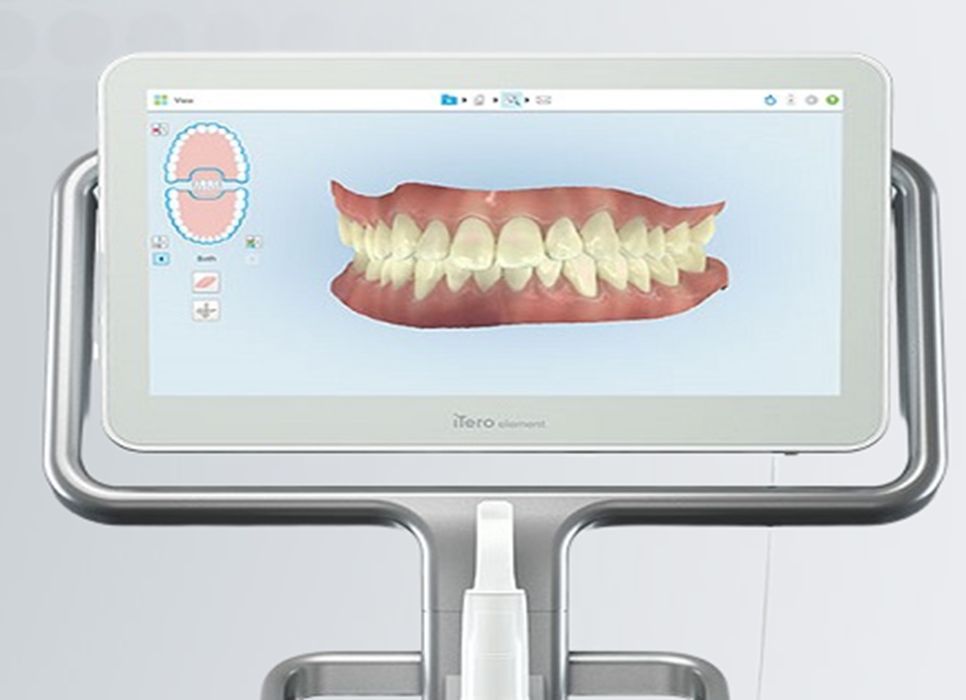
[Source: Align Technology]
Charles R. Goulding and Ryan Donley discuss recent 3D printing advancements in the dental industry.
The applications of 3D printing in the dental industry are expanding quickly as the market is adapting to the utility of the technology. According to MarketsandMarkets.com, 3D printing in the dental market reached a value of US$1.8B in 2020 and is expected to grow to US$6.5B by 2025 at a CAGR of 28.8% as both clinics and hospitals continue to adopt 3D printers.
The allure of 3D printing in the industry lies in the numerous applications and end-user benefits. The technology can be leveraged across dental applications such as Prosthodontics, Orthodontics, and Implantology. The major benefit seen in dental applications is the accuracy and speed 3D printing provides as 3D scanning technology is becoming more precise and providing doctors and patients the exact dimensions to print improved products. The result is more comfortability for patients’ dental products and less overhead costs for clinics and hospitals for materials and product iterations. The advancements in 3D printing in the dental industry have come a long way as some clinics can scan intraorally, design an appliance, and print the result in-house making trips to the dentist far less painful and time-consuming.
Intraoral Scanning Technology
The development of 3D intraoral scanning technology has been a major step for the dental industry. The ability to scan and digitize patient’s mouths and provide quickly accessible files of the scans streamlines a process that is normally uncomfortable for a patient. Typical impressions are nowhere near as accurate or quick as intraoral scanners. A scanner can capture real-time images within minutes and allow a clinician to evaluate and manipulate the imagery with enhanced detail when compared to mold impressions. Company’s like Benco Dental, 3Shape and PlanMeca have all developed intraoral scanners that are becoming adopted within industry practices. A patient’s mouth scan is additionally useful as the scan is created as a CAD/CAM model file that can be utilized in dental 3D printers to design and develop the necessary patient product such as custom crowns, bridges, Invisalign, and many more.

3D Printing Clear Aligners
An extremely popular item in orthodontics has been clear aligner technology. The clear aligner products are now being developed further with the use of enhanced software. Orthodontists can use a 3D scanned digital model to develop a 3D printed mold. The benefit of this process is the ability to enhance the aligners to better suit patients which include sequentially aligning teeth providing a more comfortable and better functioning aligner product. Invisalign has been the most successful in this field and has been using 3D scanners and printers since 1999 to produce and sell custom clear aligners. 20+ years later and the proprietary software used for Invisalign and other clear aligners is constantly undergoing improvements to a point where individual clinics can now utilize 3D scanning and printing of clear aligners and realize the benefits with smaller start-up costs.
3D printing in the dental industry may be eligible for Research and Development Tax Credits.
The Research and Development Tax Credit
The now permanent Research and Development (R&D) Tax Credit is available for companies and startups developing new or improved products, processes and/or software.
3D printing can help boost a company’s R&D Tax Credits. Wages for technical employees creating, testing and revising 3D printed prototypes can be included as a percentage of eligible time spent for the R&D Tax Credit. Similarly, when used as a method of improving a process, time spent integrating 3D printing hardware and software counts as an eligible activity. Lastly, when used for modeling and preproduction, the costs of filaments consumed during the development process may also be recovered.
Whether it is used for creating and testing prototypes or for final production, 3D printing is a great indicator that R&D Credit eligible activities are taking place. Companies implementing this technology at any point should consider taking advantage of R&D Tax Credits.
Conclusion
Additive manufacturing has been changing the landscape of the dental industry due to its adaptability in widespread applications. From large clinics and hospitals to individual practices, 3D scanning and printing in the dental industry have advanced far enough for the benefits to be realized across the industry.
